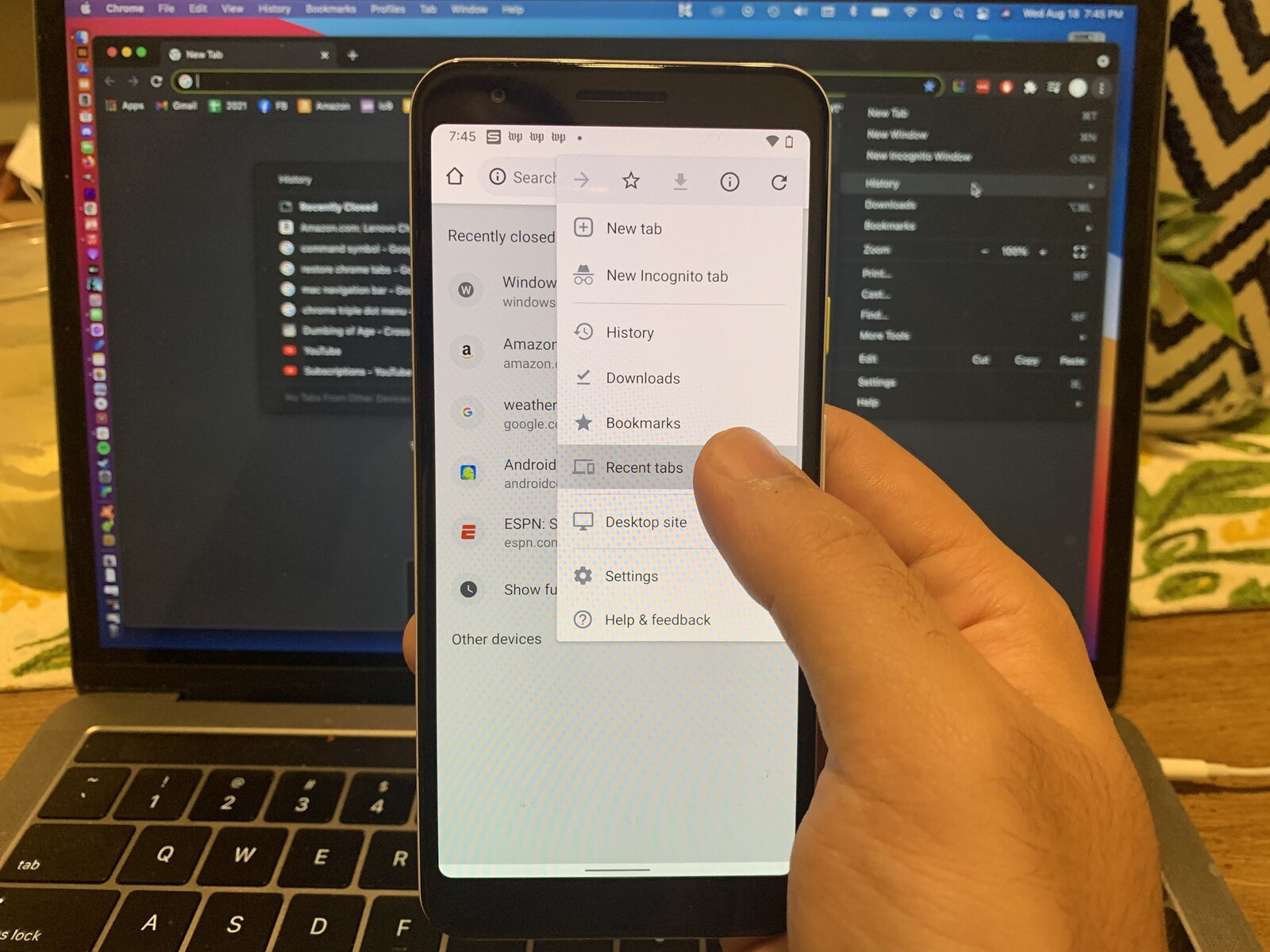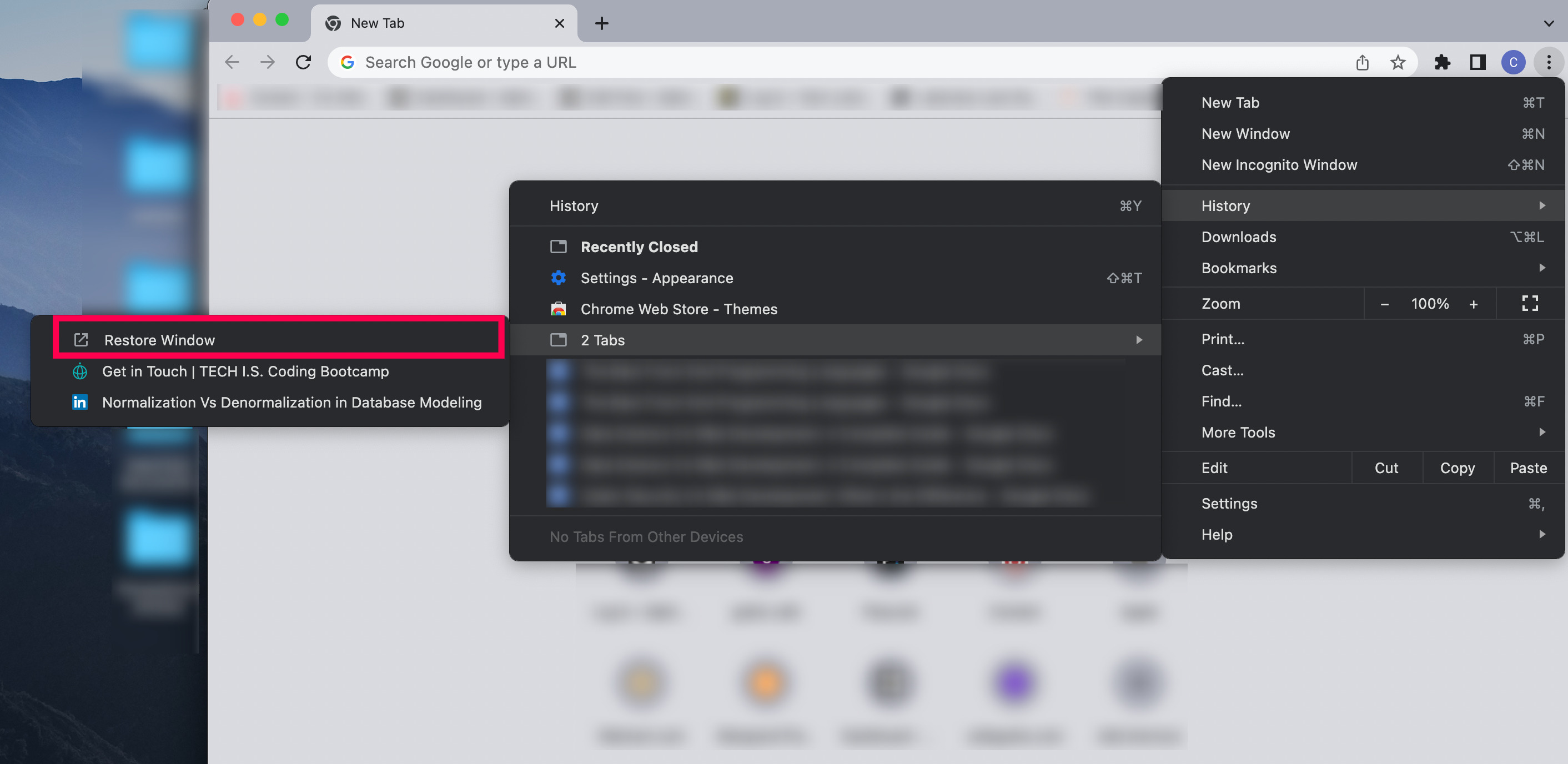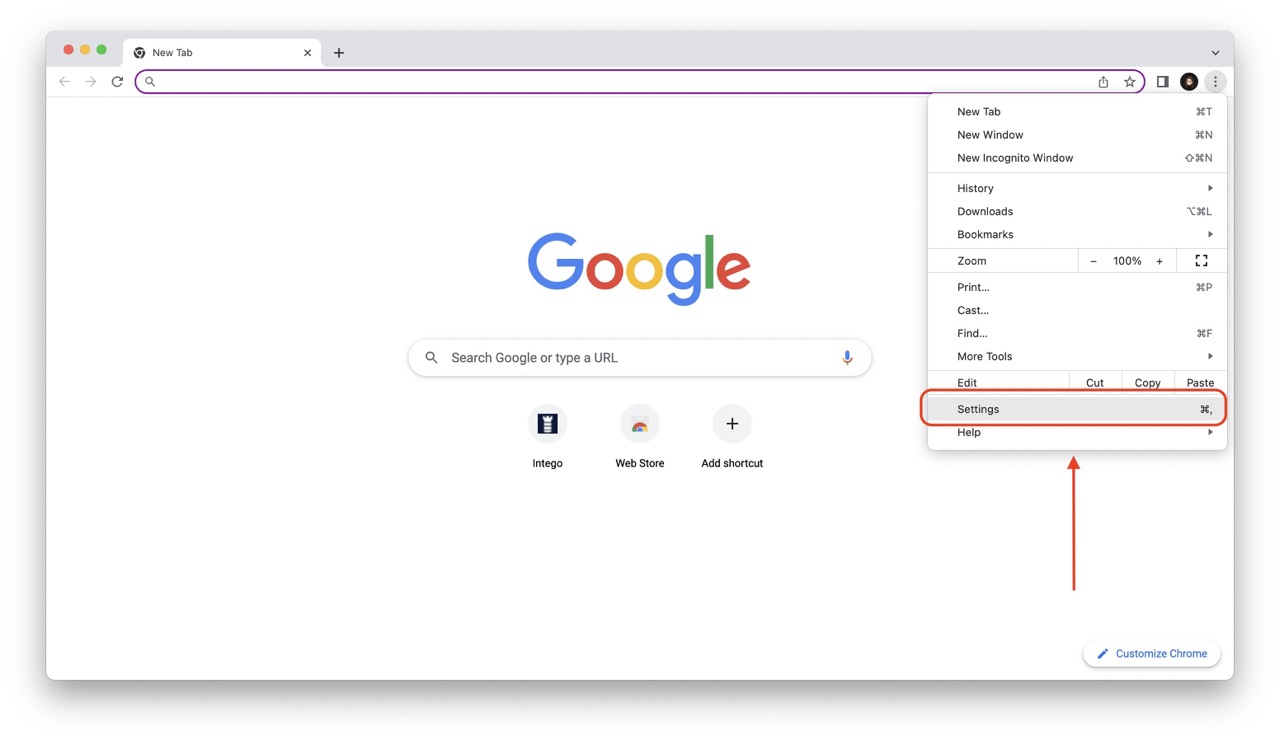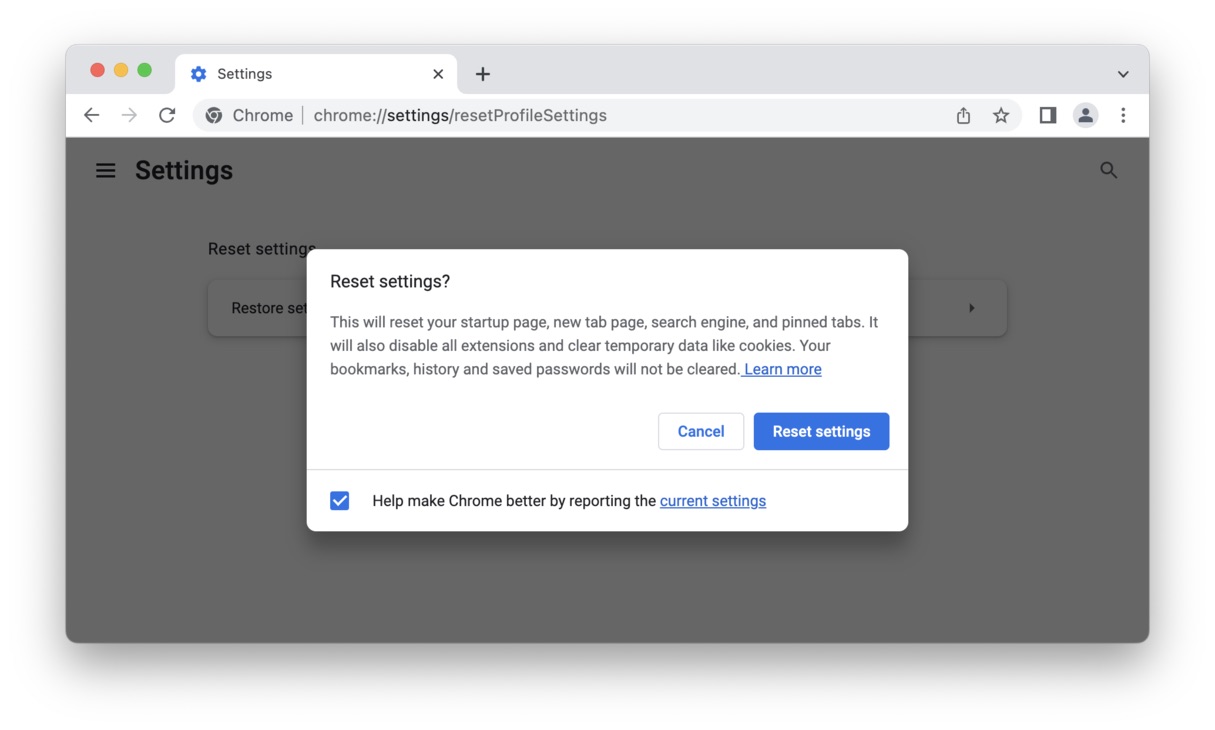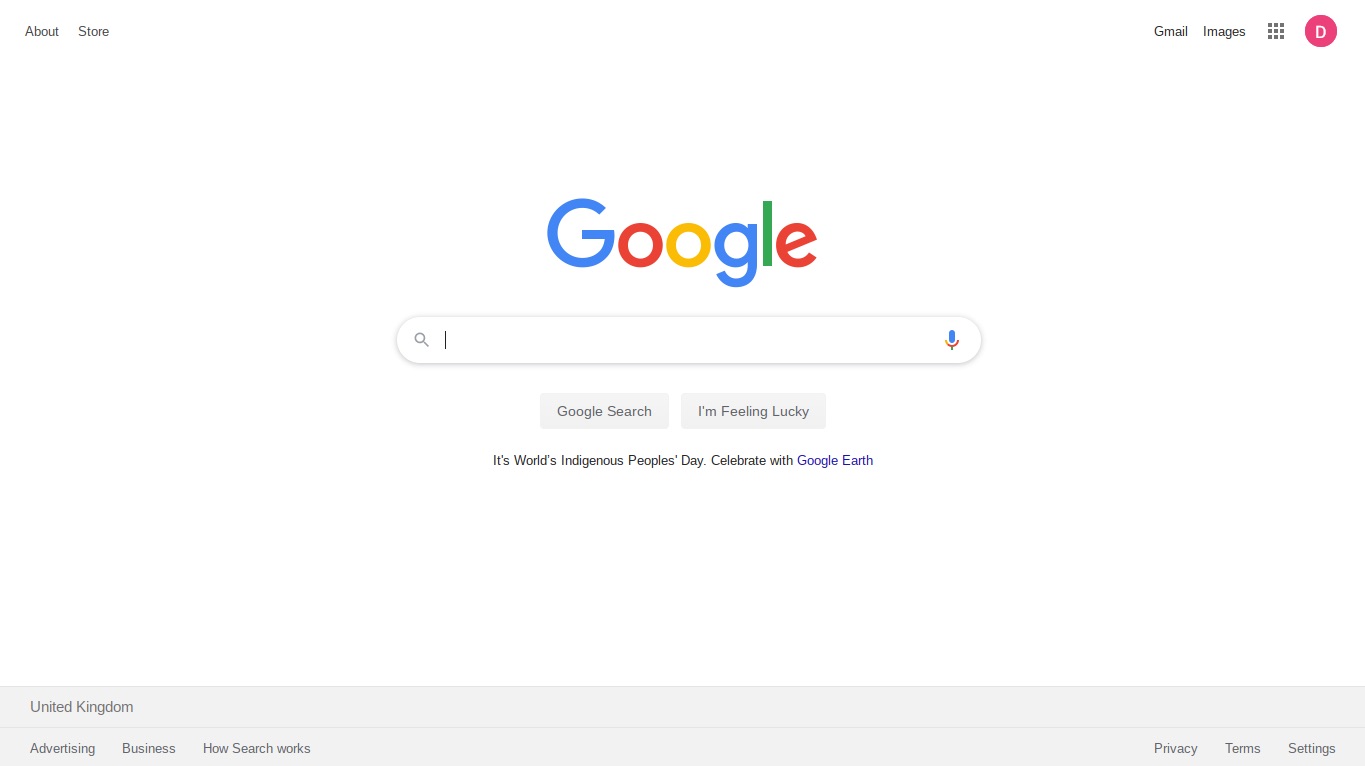Introduction
Restoring closed tabs in Google Chrome can be a lifesaver, especially when you accidentally close a tab with important information or when your browser crashes unexpectedly. Fortunately, Chrome offers several methods to easily retrieve closed tabs, ensuring that you can seamlessly pick up where you left off. Whether you prefer using built-in browser features or leveraging third-party extensions, there's a solution that suits your needs.
In this article, we'll explore various methods to restore closed tabs in Chrome, providing you with the knowledge and tools to effortlessly recover your browsing sessions. From utilizing Chrome's native "Recently Closed" and "History" features to harnessing the power of third-party extensions, we'll guide you through the step-by-step process of bringing back those closed tabs.
So, if you've ever found yourself frantically searching for a lost tab or lamenting the loss of crucial web pages, fret not. By the end of this article, you'll be equipped with the expertise to navigate the digital realm with confidence, knowing that your closed tabs are never truly lost. Let's dive into the methods and uncover the secrets to restoring your Chrome tabs with ease.
Method 1: Using the "Recently Closed" feature
One of the simplest and most effective ways to restore closed tabs in Google Chrome is by utilizing the "Recently Closed" feature. This built-in functionality allows you to quickly access and reopen tabs that you've closed during your browsing session. Whether you accidentally closed a tab or need to revisit a previously opened page, the "Recently Closed" feature provides a convenient solution.
To access the "Recently Closed" feature, you can simply right-click on an open tab within the Chrome browser. This action will reveal a dropdown menu containing the option "Reopen closed tab." By selecting this option, Chrome will promptly restore the most recently closed tab, allowing you to seamlessly continue your browsing experience without missing a beat.
Furthermore, if you've closed multiple tabs and wish to reopen them in succession, you can right-click on any open tab and choose the "Reopen closed tab" option multiple times to restore each closed tab in the order it was closed. This efficient method ensures that you can effortlessly retrieve and organize your closed tabs, enabling you to regain access to valuable web pages and content.
In addition to the right-click method, Chrome also offers a keyboard shortcut to access the "Recently Closed" feature. By pressing "Ctrl + Shift + T" on Windows or "Command + Shift + T" on Mac, you can instantly reopen the most recently closed tab, streamlining the process of tab restoration and enhancing your browsing efficiency.
The "Recently Closed" feature in Chrome serves as a valuable tool for managing your browsing history and recovering closed tabs with ease. Whether you prefer using the right-click menu or keyboard shortcuts, this method empowers you to swiftly retrieve closed tabs, ensuring that you can maintain a seamless and uninterrupted browsing experience.
By leveraging the "Recently Closed" feature, you can navigate the digital landscape with confidence, knowing that your closed tabs are always within reach. This intuitive functionality exemplifies Chrome's commitment to user convenience and accessibility, providing a straightforward solution for restoring closed tabs and optimizing your browsing workflow.
Method 2: Using the "History" feature
Another effective method for restoring closed tabs in Google Chrome involves utilizing the "History" feature. This feature provides a comprehensive overview of your browsing activity, allowing you to access a detailed record of previously visited websites and closed tabs. By leveraging the "History" feature, you can effortlessly retrieve closed tabs from your browsing sessions, ensuring that you can revisit important web pages and continue your online activities without interruption.
To access the "History" feature in Chrome, you can simply click on the three-dot menu icon located in the top-right corner of the browser window. This action will reveal a dropdown menu, where you can navigate to the "History" option and select it to access your browsing history. Alternatively, you can use the keyboard shortcut "Ctrl + H" on Windows or "Command + Y" on Mac to directly open the browsing history page.
Upon accessing the "History" page, you will be presented with a chronological list of websites you've visited during your browsing sessions. This comprehensive record includes not only the sites you've actively visited but also the tabs you've closed, providing a detailed overview of your browsing activity. To restore a closed tab using the "History" feature, you can simply scroll through the list, locate the desired webpage or tab, and click on it to reopen it in a new browser tab.
Furthermore, the "History" feature in Chrome offers a search functionality, allowing you to quickly locate specific web pages or closed tabs within your browsing history. By entering keywords or URLs into the search bar on the "History" page, you can efficiently narrow down your browsing history and pinpoint the closed tabs you wish to restore. This streamlined search capability enhances the overall user experience, enabling you to retrieve closed tabs with precision and ease.
In addition to its primary function of providing a detailed browsing history, the "History" feature in Chrome serves as a valuable resource for managing and organizing your web activity. Whether you need to revisit a closed tab from earlier in the day or retrieve a webpage from a previous browsing session, the "History" feature offers a convenient and intuitive solution for restoring closed tabs and maintaining a seamless browsing experience.
By leveraging the "History" feature, you can harness the full potential of Chrome's browsing history functionality, ensuring that your closed tabs are always within reach. This method exemplifies Chrome's commitment to user-friendly features and accessibility, empowering you to effortlessly retrieve closed tabs and seamlessly continue your online endeavors.
Method 3: Using a third-party extension
In addition to Chrome's built-in features, such as the "Recently Closed" and "History" functionalities, users have the option to leverage third-party extensions to enhance their tab restoration capabilities. These extensions offer advanced features and customization options, allowing users to tailor their browsing experience to suit their specific needs and preferences. By integrating third-party extensions into Chrome, users can access a diverse range of tools designed to streamline tab management and facilitate seamless tab restoration.
One popular third-party extension for tab restoration is "Session Buddy." This feature-rich extension empowers users to efficiently manage and restore closed tabs, providing a comprehensive solution for organizing browsing sessions. With Session Buddy, users can save and restore multiple browsing sessions, effectively preserving their tab configurations and enabling quick access to previously closed tabs. Additionally, the extension offers advanced features such as session recovery after browser crashes and the ability to export and import browsing sessions, further enhancing the flexibility and convenience of tab restoration.
Another notable third-party extension is "Tab Wrangler," which offers automated tab management and restoration capabilities. Tab Wrangler automatically closes inactive tabs to declutter the browsing environment, ensuring optimal tab organization and performance. In the event that a tab is accidentally closed, Tab Wrangler provides a seamless restoration process, allowing users to effortlessly retrieve closed tabs and continue their browsing activities without disruption. This extension's automated approach to tab management simplifies the task of tab restoration, providing a hassle-free solution for users seeking efficient tab organization and retrieval.
Furthermore, the "One Tab" extension offers a unique approach to tab management and restoration by consolidating open tabs into a single list. This streamlined approach reduces tab clutter and optimizes system resources, while also facilitating quick and easy tab restoration. With One Tab, users can consolidate their open tabs into a single list, effectively preserving their browsing sessions and simplifying the process of restoring closed tabs. The extension's intuitive interface and customizable features make it a valuable tool for users looking to streamline tab management and effortlessly retrieve closed tabs.
By exploring the diverse range of third-party extensions available for Chrome, users can discover innovative solutions for tab restoration and management. Whether seeking advanced session management capabilities, automated tab organization, or streamlined tab consolidation, third-party extensions offer a wealth of options to enhance the tab restoration experience. With the flexibility and customization offered by these extensions, users can tailor their browsing environment to suit their individual preferences, ensuring a seamless and efficient tab restoration process.
Conclusion
In conclusion, the ability to restore closed tabs in Google Chrome is a valuable feature that enhances the browsing experience and mitigates the frustration of accidentally losing important web pages. Throughout this article, we've explored multiple methods for restoring closed tabs, ranging from Chrome's native features to the utilization of third-party extensions. By understanding and leveraging these methods, users can confidently navigate the digital realm, knowing that their closed tabs are always within reach.
The "Recently Closed" feature in Chrome serves as a quick and convenient solution for restoring the most recently closed tabs. Whether accessed through the right-click menu or keyboard shortcuts, this feature empowers users to swiftly retrieve closed tabs and seamlessly continue their browsing sessions. Its intuitive functionality exemplifies Chrome's commitment to user convenience and accessibility, providing a straightforward solution for restoring closed tabs and optimizing browsing workflows.
Furthermore, the "History" feature offers a comprehensive overview of browsing activity, allowing users to access a detailed record of previously visited websites and closed tabs. With its search functionality and chronological display, the "History" feature provides a versatile platform for efficiently retrieving closed tabs and managing browsing history. This method exemplifies Chrome's dedication to empowering users with robust tools for organizing and accessing their web activity.
Additionally, the integration of third-party extensions, such as "Session Buddy," "Tab Wrangler," and "One Tab," expands the capabilities of tab restoration and management in Chrome. These extensions offer advanced features and customization options, catering to diverse user preferences and enhancing the overall tab restoration experience. By exploring the diverse range of third-party extensions available for Chrome, users can discover innovative solutions for tab restoration and management, ensuring a seamless and efficient browsing experience.
In essence, the methods and tools discussed in this article underscore Chrome's commitment to providing users with versatile and user-friendly features for managing and restoring closed tabs. By familiarizing themselves with these methods and exploring the available extensions, users can optimize their browsing experience, maintain productivity, and seamlessly recover closed tabs, ultimately enhancing their overall satisfaction with the Chrome browser.







